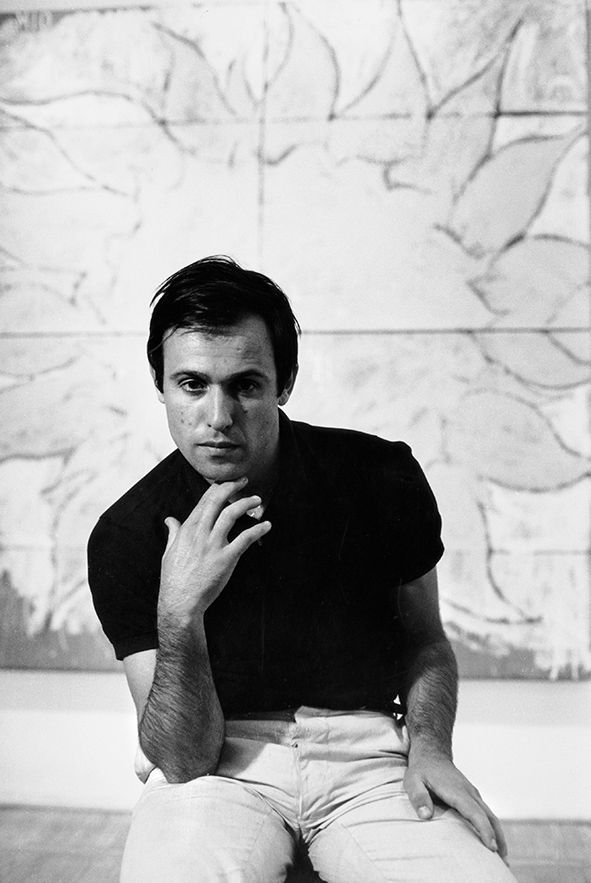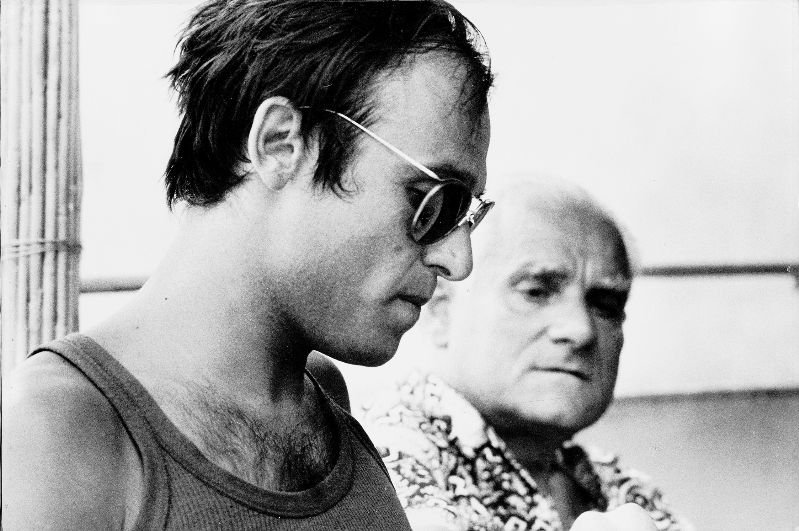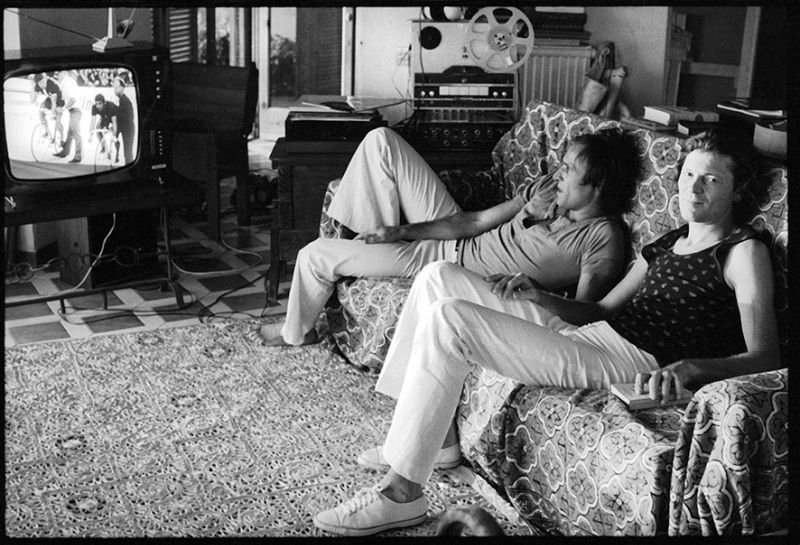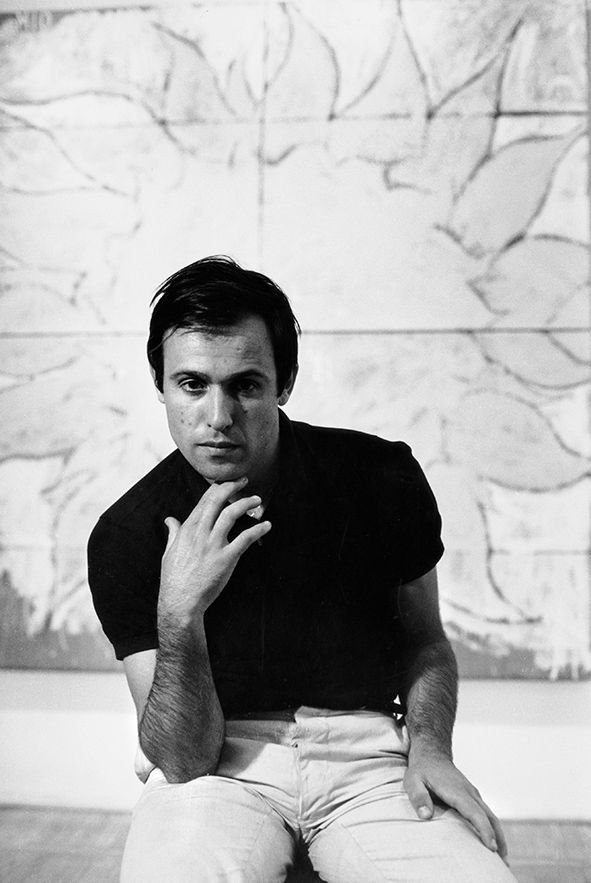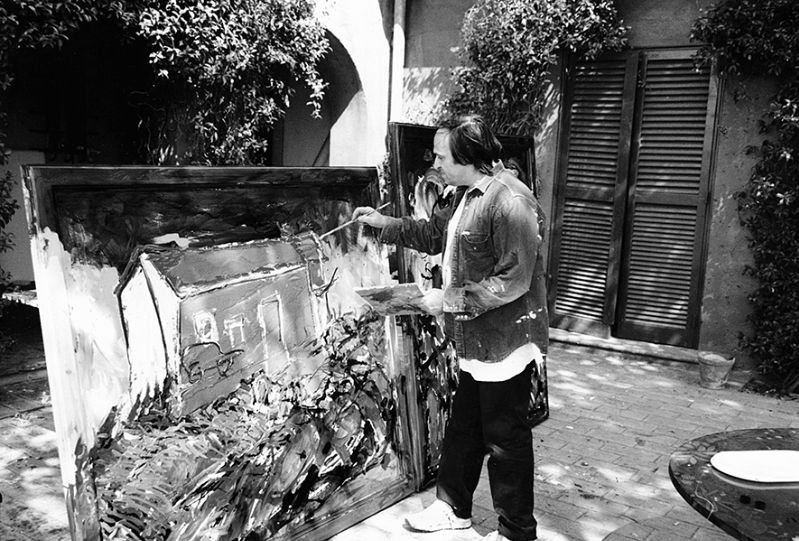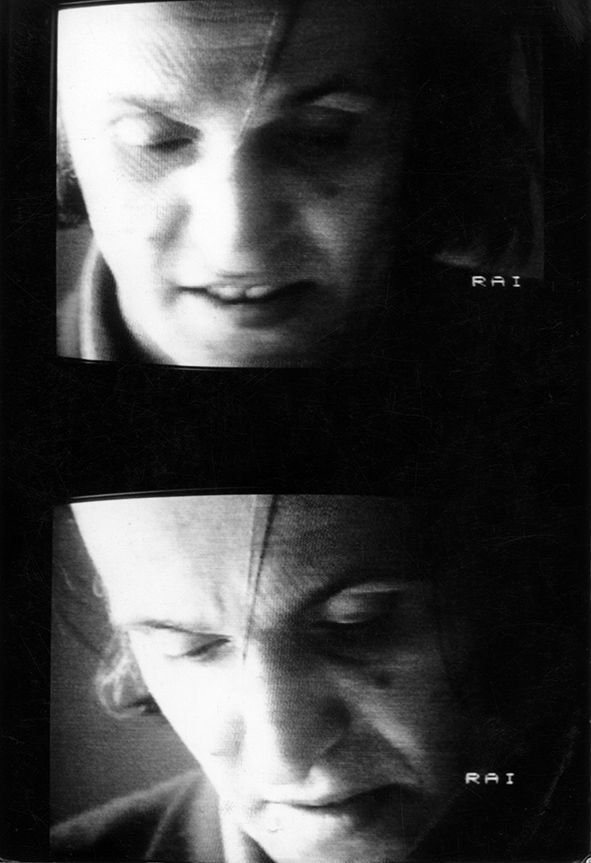Mario Schifano
Una biografia
“Even those who don’t know me know me, so make up what you like”: this is how Mario Schifano warded off the would-be biographers who besieged him. So effectively that one of the most prolific and popular Italian artists of the 20th century – who was also one of the most forged and most talked about – is, paradoxically, one of the least known. Through a multi-voiced narration by people who “experienced”, followed and bore with him, Luca Ronchi offers us one possible biography of Mario Schifano, with all the dark sides, surprises, weaknesses and intimate aspects of a personality who has become a legend.
The setting for the journey through time on which Ronchi takes us could only be Rome, the “big cosmopolitan village” that during the war welcomed Schifano as a boy returning from the white beaches of Libya. In the early 1960s, Mario began painting the monochromes that would make him an icon of Italian 20th-century art on his terrace that functioned as an open-air studio at Piazza Scanderberg, beneath the unforgettable skies of the Eternal City. He also decided to continue his pictorial adventure in Rome and to construct, in a spate of “lucid madness”, his “underground” universe in the name of diversification and “cross-fertilization”. He founded a pop-rock group; made avant-garde films; hung out with intellectuals and aristocrats; changed cars, outfits and TV sets every two seconds, and was arrested and “pilloried” for drug use. Just like “a small puma, whose musculature and ability to spring one would never suspect, and very refined in his movements and behaviour”, Schifano was a gadabout, always on the move.
Possessing an innate charm and the “good looks of Rudolph Valentino”, he was also a Don Juan, seducing stars like Marianne Faithfull and Maria Schneider, and also the three most important women in his life: Anita Pallenberg, Nancy Ruspoli and Monica De Bei, who gave him a son.
In the popular imagination Schifano will perhaps always perfectly embody the romantic conception of the artist as a wild-living genius. But behind the fame, now that he is no longer the talk of the town, there is a painter about whom we still know very little. And one who, in his last days, liked to quote the words of Lucian Freud: “the man is nothing, the work is everything”.
Textual index
Nota dell’Archivio Mario Schifano Personaggi
Prima parte 1958-1963
1. Alla fine degli anni cinquanta
2. Monocromi
3. La prima mostra
4. Piazza del Popolo
5. Un altro mondo
Seconda parte 1964-1971
6. Segni d’energia
7. Il clima felice degli anni sessanta
8. Sperimentazioni
9. Palme e stelle
10. Festa cinese
11. Grande angolo, sogni, stelle
12. Fuoco nero
13. Cinema off
14. Umano non umano
15. Wild Horses
16. Tele emulsionate
17. Human Lab
18. Sotto il segno dell’ariete
Terza parte 1972-1981
19. “Contemporanea”
20. Nel dolce rumore della vita
21. Il vortice
22. Una strana gioia di vivere
23. Umano, troppo umano
24. Cold turkey
25. L’ombra di un’ombra
26. The Times They Are a Changin’
Quarta parte 1982-1995
27. Vivere è per amare qualcosa
28. Ansedonia
29. Saxa Rubra
30. Una pittura folgorante
31. Il meglio del meglio
32. L’incendio dei ricordi personali
33. Franco
34. Tano
35. Alle Mantellate
36. Un carattere d’artista
37. Dalla vita in su e dalla vita in giù
38. Patologia della pittura
39. Lo studio laboratorio
40. Assenza di gravità
41. Adieu
42. Alighiero
43. La madre di ogni desiderio
44. Assolutamente falsi
45. Arte democratica
Quinta parte 1996-1998
46. Il quadrificio
47. Crocefisso a un ferro di cavallo
48. L’ultima battaglia
49. Forse per un pittore la morte è solo un colore
Mario Schifano


